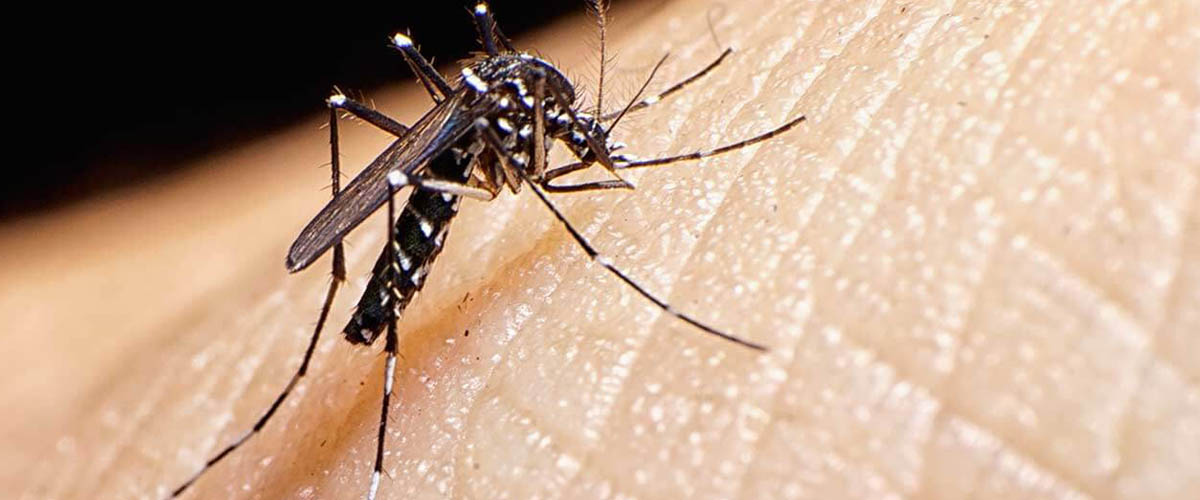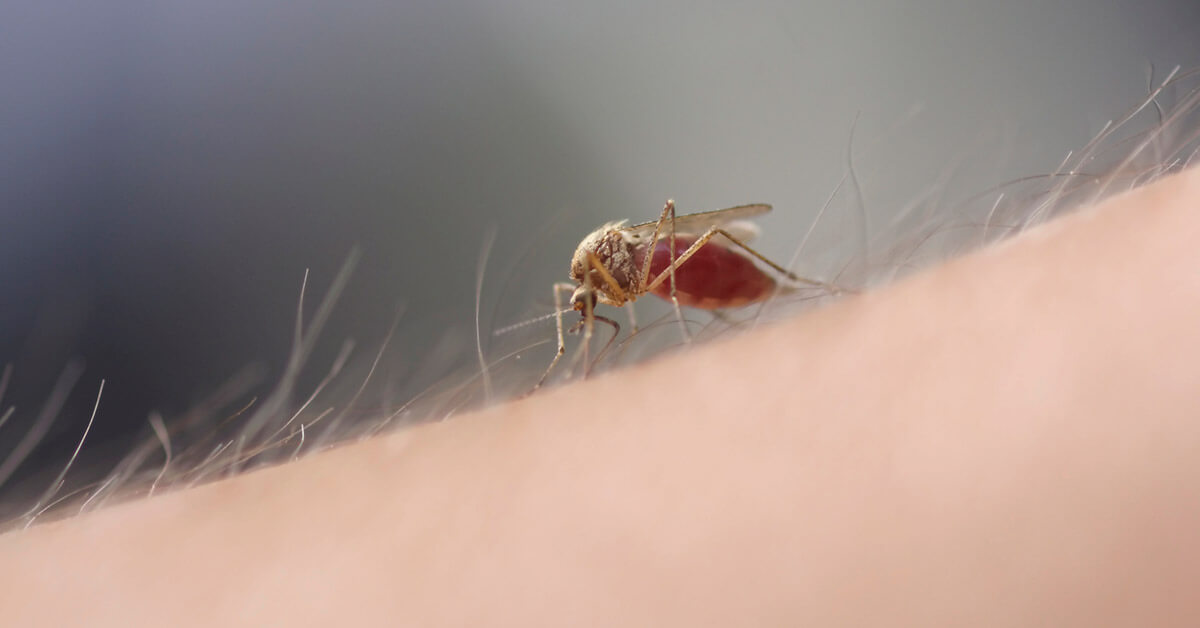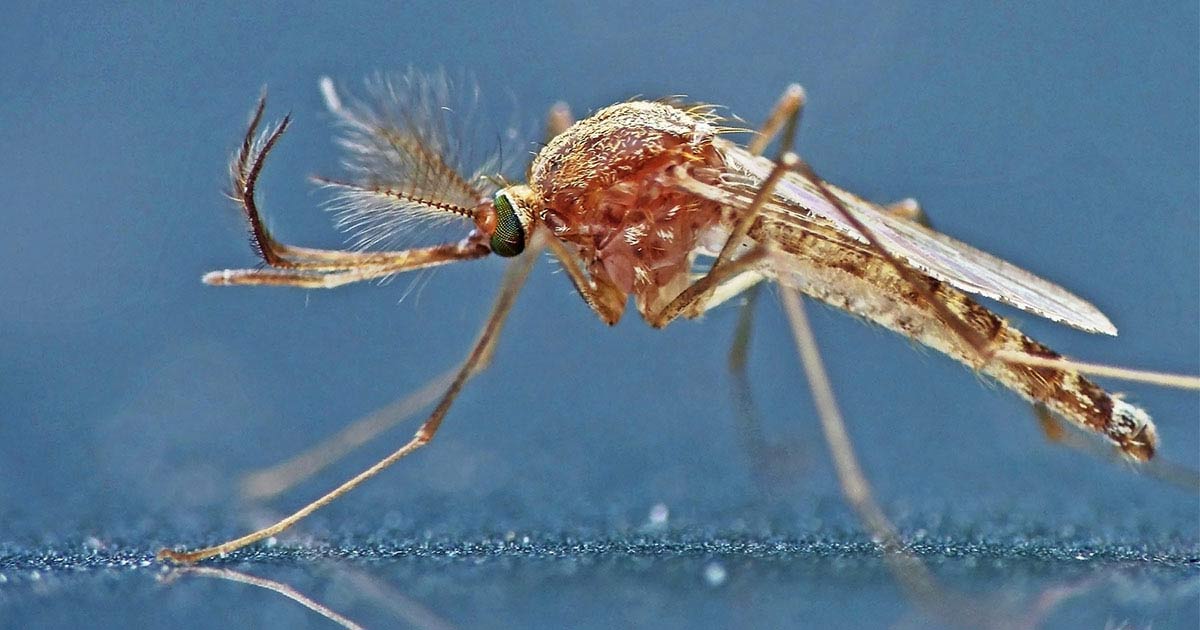How To Protect Yourself Against the Zika Virus
On February 1, 2016, the World Health Organization (WHO) declared the fast-moving Zika virus a Public Health Emergency of International Concern. Since that time, knowledge about the Zika virus and the threat it poses has grown. Global health officials agree the primary way the virus spreads is through bites from infected mosquitoes. Knowing the answers to the following common questions about mosquitoes and Zika virus can help protect you and your family from this disease:
WHERE DID ZIKA VIRUS START?
The Zika virus was first identified in rhesus monkeys in East Africa in 1947. Named after the Ugandan forest where it was found, the virus was linked to a mosquito the following year. Four years later, scientists confirmed the virus in humans in that region. Zika virus has been present in Africa and Asia since that time, but outbreaks were rare until Zika hit the Pacific in 2007. The first case of Zika virus disease acquired in the Americas was confirmed in Brazil in May 2015.1 In the months following that case, the Zika virus spread rapidly through the Americas.
HOW IS ZIKA VIRUS TRANSMITTED?
Though Zika virus can spread other ways, mosquito bites from two species of invasive mosquitoes are the primary means of transmission. The main carrier in tropical and subtropical areas is the yellow fever mosquito, known by the scientific name Aedes aegypti. A second known carrier is the Asian tiger mosquito, Aedes albopictus, which can overwinter and reproduce in much colder climates.2,3 These same species spread the viruses that cause other mosquito-borne diseases, including dengue, chikungunya and yellow fever.2
Humans infected with the virus while traveling can bring the virus into a new area on their return. When uninfected mosquitoes in that area bite an infected person, they begin transmitting the virus to other humans through bites. The outbreaks caused through these local mosquitoes are known as local transmissions.
In addition to spreading through bites from infected mosquitoes, Zika virus can be transmitted from mother to child during pregnancy, resulting in severe birth defects. It can also be transmitted through human sexual contact.4 Scientists continue to investigate other possible avenues for Zika transmission.
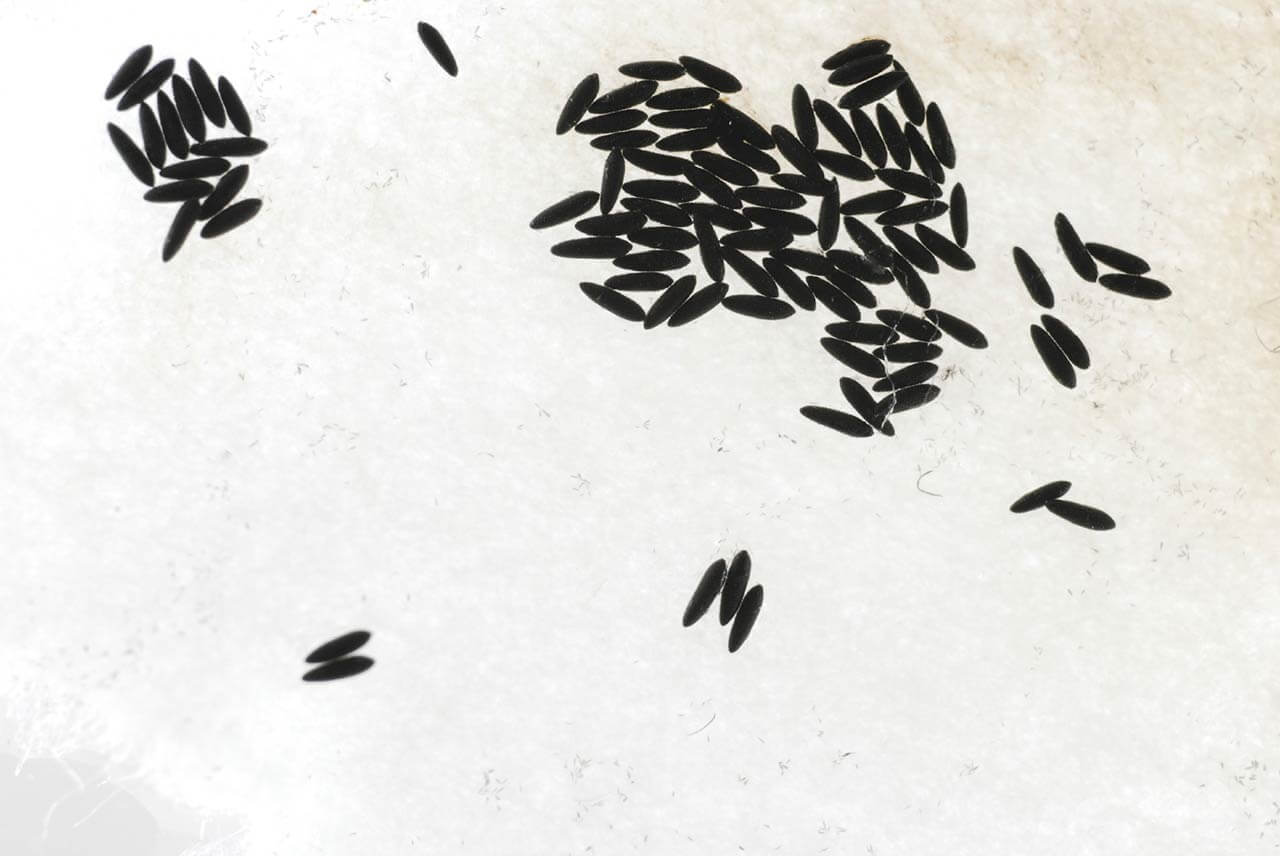
Aedes mosquito eggs are white at first, but quickly turn to shiny black.
WHAT IS THE CURRENT U.S. RANGE OF THE AEDES MOSQUITOES?
As of September 2017, the Centers for Disease Control and Prevention (CDC) estimate that the range of Aedes aegypti has already expanded since the early days of the Brazilian outbreak. In the United States, this mosquito is most heavily concentrated in the South and Southeast. However, its range now extends north into Pennsylvania and Massachusetts, west across Texas and the Southwest, and through most of California.5
The hardier Aedes albopictus has a much wider range, and warmer weather trends may extend its potential. Populations likely exist from the southern tip of Maine down through Florida, and west from southern Wisconsin into New Mexico. Pockets of this pest also exist throughout California and the Pacific Northwest.5 Outbreaks of the diseases these mosquitoes may carry can happen anywhere the mosquito exists.
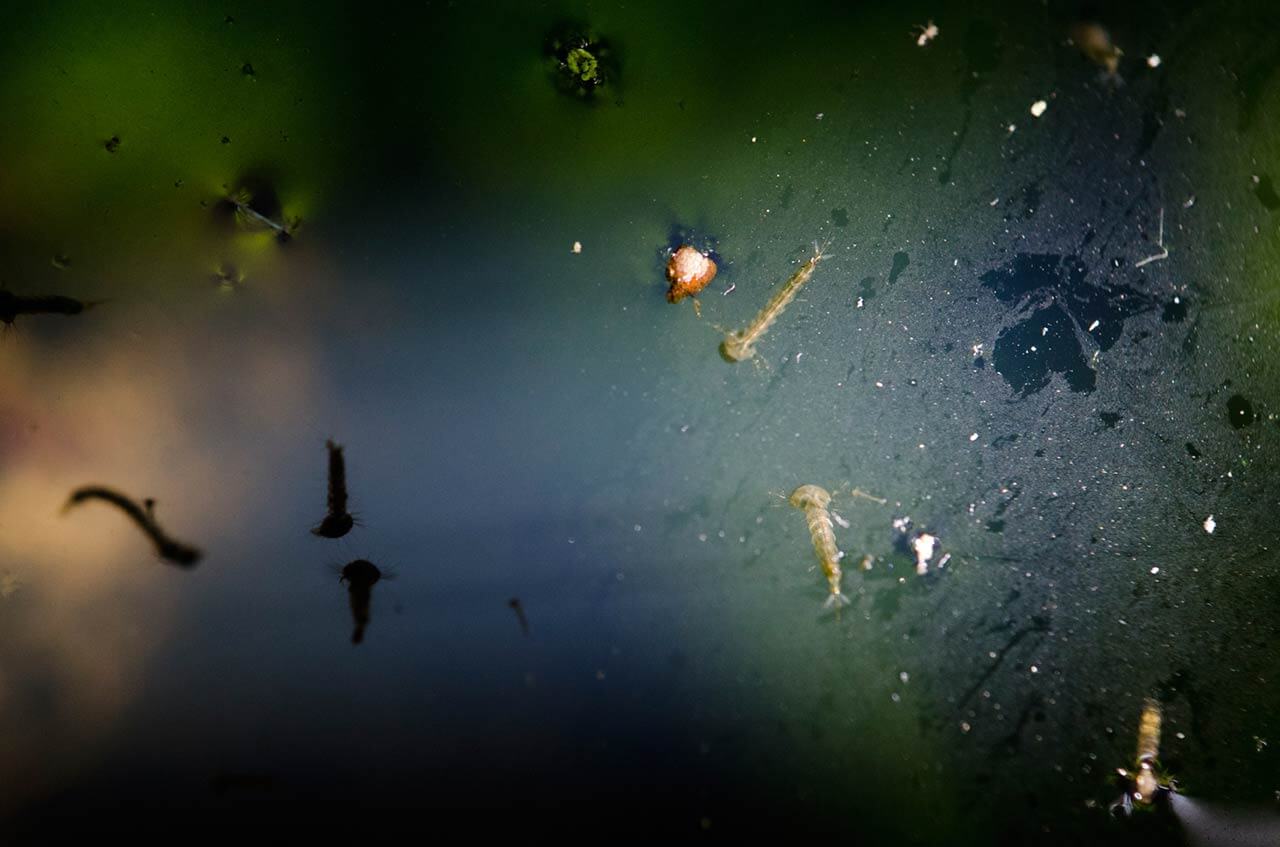
Mosquitoes breed and hatch in stagnant water.
HOW DO THE AEDES MOSQUITOES LOOK AND ACT?
The non-native mosquitoes involved in the Zika outbreaks in the Americas stand out from common mosquitoes in most areas. However, the two species look somewhat similar to untrained eyes. The yellow fever mosquito, Aedes aegypti, is dark brown or black with distinctive white scales in a violin-like shape on top of its thorax, right behind its head.6 Asian tiger mosquitoes, Aedes albopictus, have black bodies with white stripes, including a prominent white stripe down the center of their backs.7 These mosquitoes are aggressive daytime biters. Morning and late afternoon or early evening are their most active feeding times.

The Aedes mosquitoes have distinctive white markings.
WHERE IN THE U.S. HAS THE ZIKA VIRUS BEEN REPORTED?
As of November 8, 2017, there are no known active Zika cases in the United States. However, there have been 5,575 verified symptomatic cases of the virus in the United States. The vast majority involved travel outside the country, but health officials attribute 226 cases to local mosquito transmissions within the United States. Of those, 219 cases occurred in Florida and seven in Texas.
In the U.S. territories, including Puerto Rico, the U.S. Virgin Islands and American Samoa, an additional 37,075 cases have been reported. Only 147 of those involved travelers returning to the territories from Zika-infested areas. The remaining 36,928 were local transmissions.8
WHY IS ZIKA VIRUS SPREADING SO QUICKLY?
When Zika hit the Americas, its rapid spread shocked health officials and the public. The Pan American Health Organization (PAHO) blamed two factors for the speed with which Zika swept across the region:
- The virus was new to the Americas. Because residents had not been exposed to it before, the population lacked any established immunity to the virus.
- The range of the Aedes mosquitoes has increased significantly. These African and Asian natives only fly about 1,300 feet themselves,3 but humans have spread them unintentionally through exported and imported products. They've been identified in all countries in the Americas except Canada and Chile.9
WHAT ARE THE SYMPTOMS OF ZIKA VIRUS DISEASE AND ITS THREAT TO HEALTH?
Zika symptoms include fever, headache, skin rashes, conjunctivitis and general muscle or joint pain. The mild symptoms generally pass in two to seven days without treatment, leaving the patient immune to future exposures. It's estimated that 80 percent of those people infected with the virus go undiagnosed. As of November 2017, there is no specific medicine or vaccine for the Zika virus.2,3
In addition to these relatively mild symptoms, the virus can cause severe complications in pregnancies and life-threatening birth defects that include brain abnormalities. Zika has also been linked to severe complications for individuals with autoimmune or neurological diseases, in particular. Health officials continue to work to determine the full threat of this disease. If you suspect you have been infected with the Zika virus, contact your doctor immediately.
WHAT CAN PEOPLE DO TO PROTECT THEMSELVES AGAINST ZIKA VIRUS?
World health authorities at the Centers for Disease Control and Prevention (CDC) and the World Health Organization (WHO) state that avoiding mosquito bites and reducing mosquito populations are the most effective ways to protect yourself against Zika virus disease.2,3,10
The following steps can help you prevent Zika's spread:
- Protect yourself against mosquito bites. Health officials recommend the regular use of insect repellents containing the active ingredients DEET or picaridin, also known as icaridin. Wear light-colored clothing whenever possible, and dress to limit the amount of exposed skin.
- Protect your home from mosquito entry. Keep doors and windows closed, or use effective screens to prevent mosquito entry. Use air conditioning instead of open windows, if possible. If traveling, sleep under mosquito nets if windows are unscreened.
- Eliminate Aedes breeding grounds. These mosquitoes depend on confined, stagnant, standing water for breeding. Remove undesirable water from all potential mosquito sites, including saucers under container plants, pet bowls, old tires, gutters and even flower vases in unprotected areas. Pour the water out onto the ground, not into a drain or body of water, so that larvae are exposed and water supplies are not contaminated. Fill in low-lying lawn areas where water may accumulate, and keep grass short and weed-free. Aedes mosquito eggs can survive for extended periods of time without water, so permanent repair of problem sites is essential.
- Treat known and potential mosquito areas with effective larvicides. For desirable water sites, such as birdbaths, rain barrels and water gardens, treat with mosquito controls known as "larvicides. Larvicide products, such as Amdro Quick Kill® Mosquito Bombs and Amdro Quick Kill® Mosquito Pellets, prevent mosquito larvae from maturing to the breeding, biting adult stage.
- Treat outdoor areas with effective adulticides. Mosquitoes that reach the adult stage are capable of transmitting mosquito-borne pathogens through bites. Treat outdoor areas under your control with an effective "adulticide" that targets this mature mosquito stage. Adulticide products, such as Amdro Quick Kill® Mosquito Yard Spray and Amdro Quick Kill® Mosquito Fogger, kill adult mosquitoes and protect your lawns, gardens and other outdoor spaces.
For the most recent updates in your area for Zika and other mosquito-borne diseases, check with local public health officials and CDC and WHO officials or websites. The people behind the Amdro® brand are committed to helping protect you and your family against emerging pest threats.
Amdro and Amdro Quick Kill are registered trademarks of Central Garden & Pet Company.
Always read the product label and follow the instructions carefully.
Sources:
1. World Health Organization, "The History of the Zika Virus," February 2017.
2. Centers for Disease Control and Prevention, "Zika Virus," November 2017.
3. World Health Organization, "Zika Virus and Complications: Questions and Answers,," March 2017.
4. Centers for Disease Control and Prevention, "Zika Virus – Transmission," October 2017.
5. Centers for Disease Control and Prevention, "Estimated Range of Aedes Aegypti and Aedes Albopictus in the United States, 2017," September 2017.
6. C. Zettle and P. Kaufman, "Yellow Fever Mosquito – Aedes Aegypti," University of Florida, April 2016.
7. L. Rios and J. E. Maruniak, "Asian Tiger Mosquito – Aedes Albopictus," University of Florida, July 2014.
8. Centers for Disease Control and Prevention, "Zika Cases in the United States," November 2017.
9. Pan American Health Organization, "PAHO Statement on Zika Virus Transmission and Prevention," World Health Organization Regional Office for the Americas, February 2016.
10. Centers for Disease Control and Prevention,"Controlling Mosquitoes at Home," April 2017.

